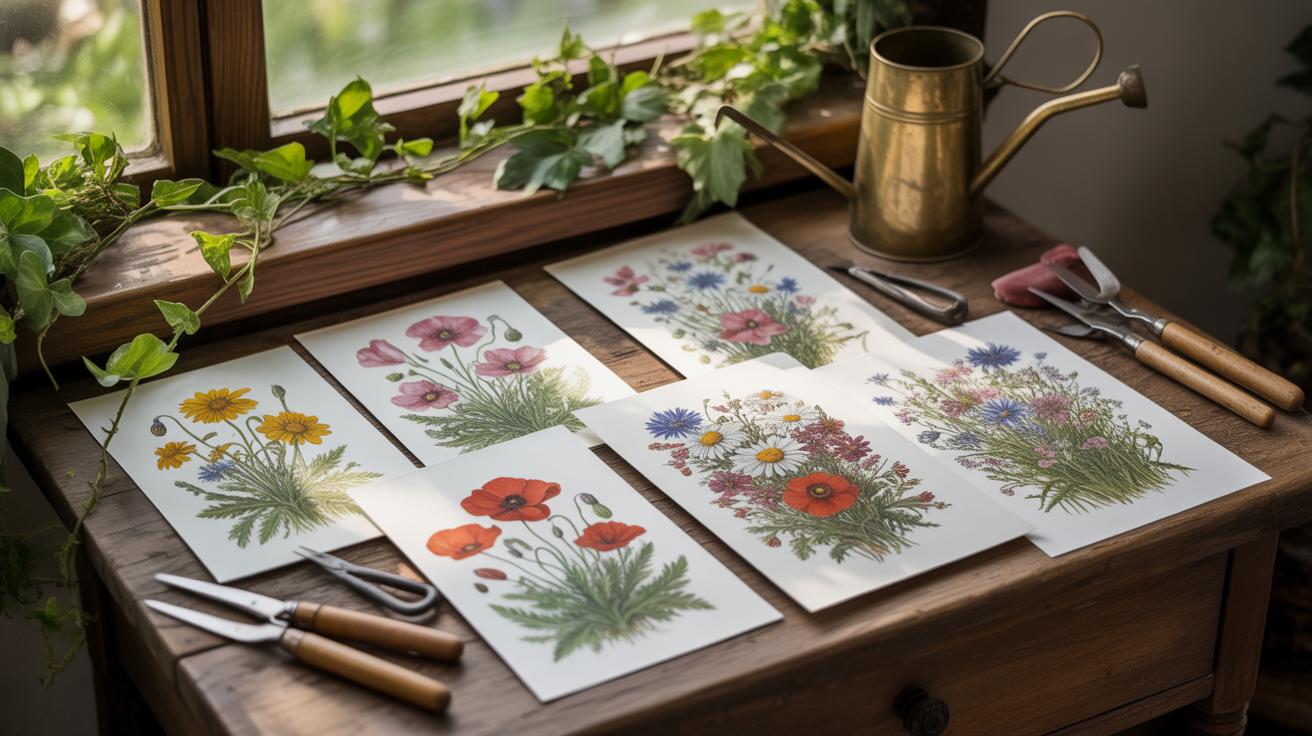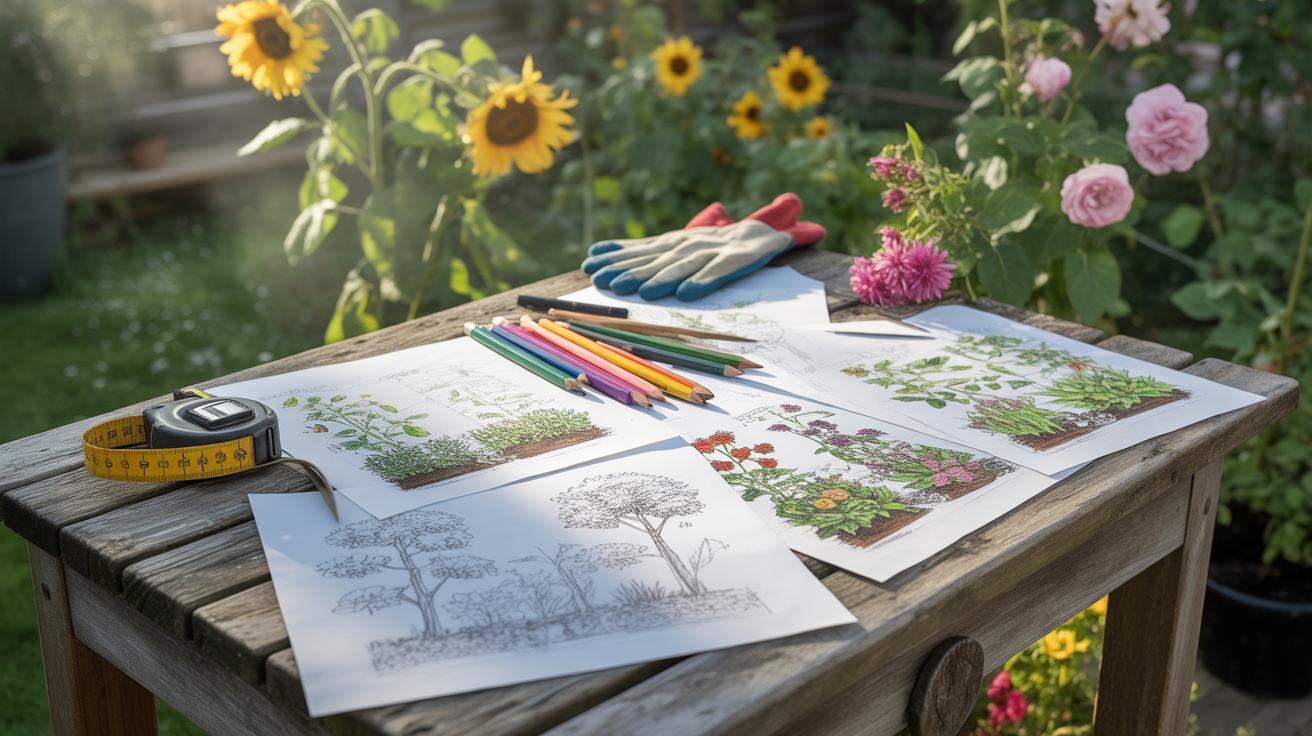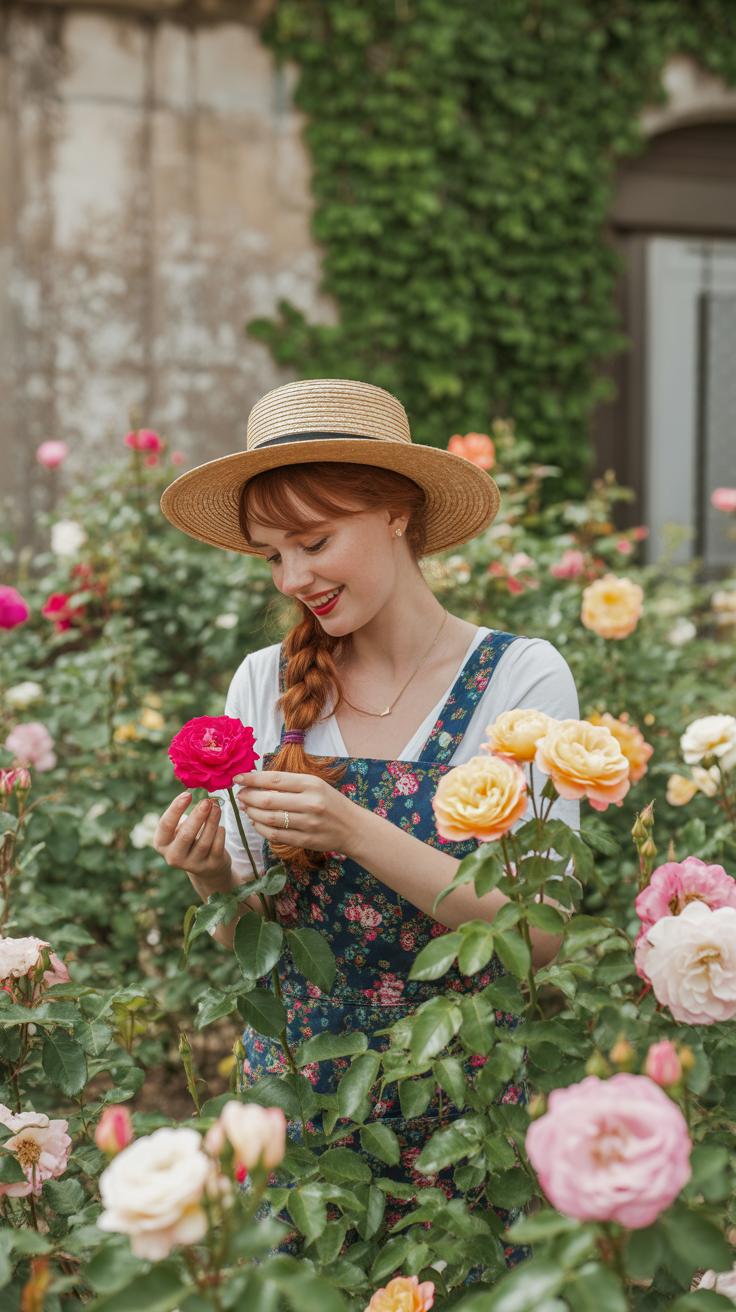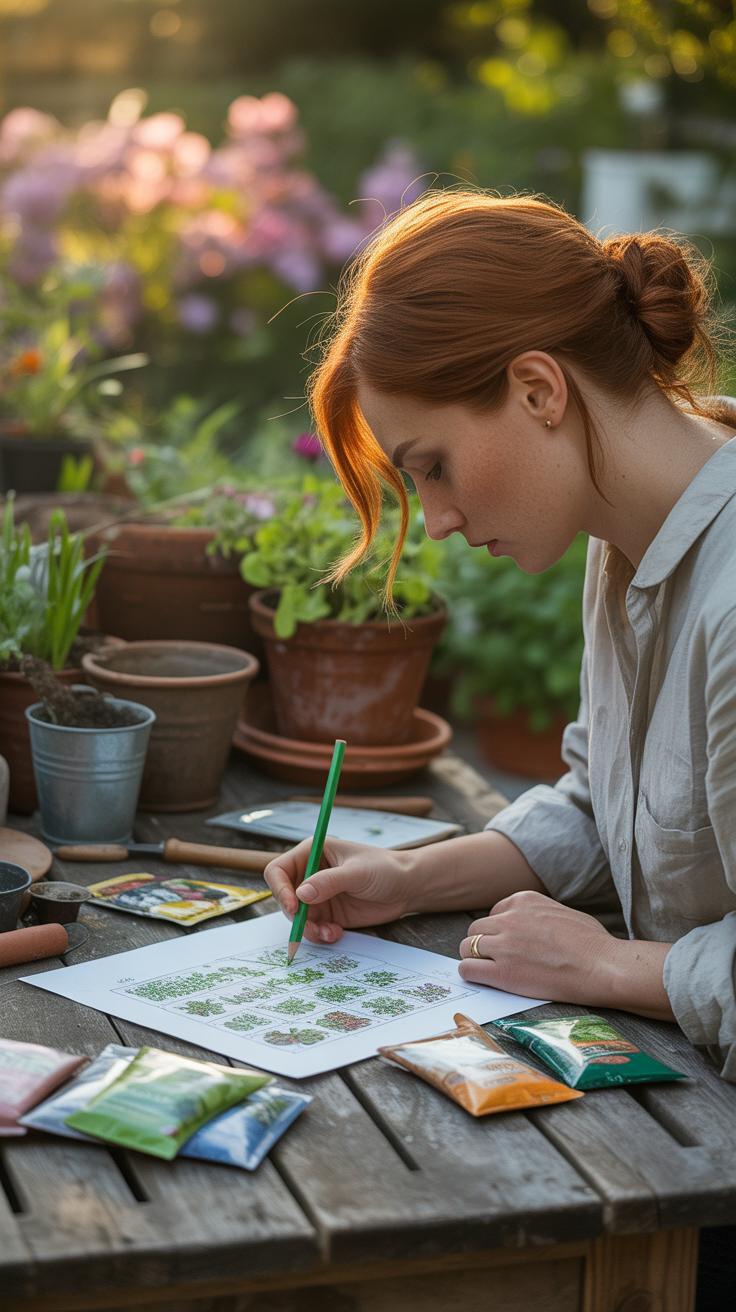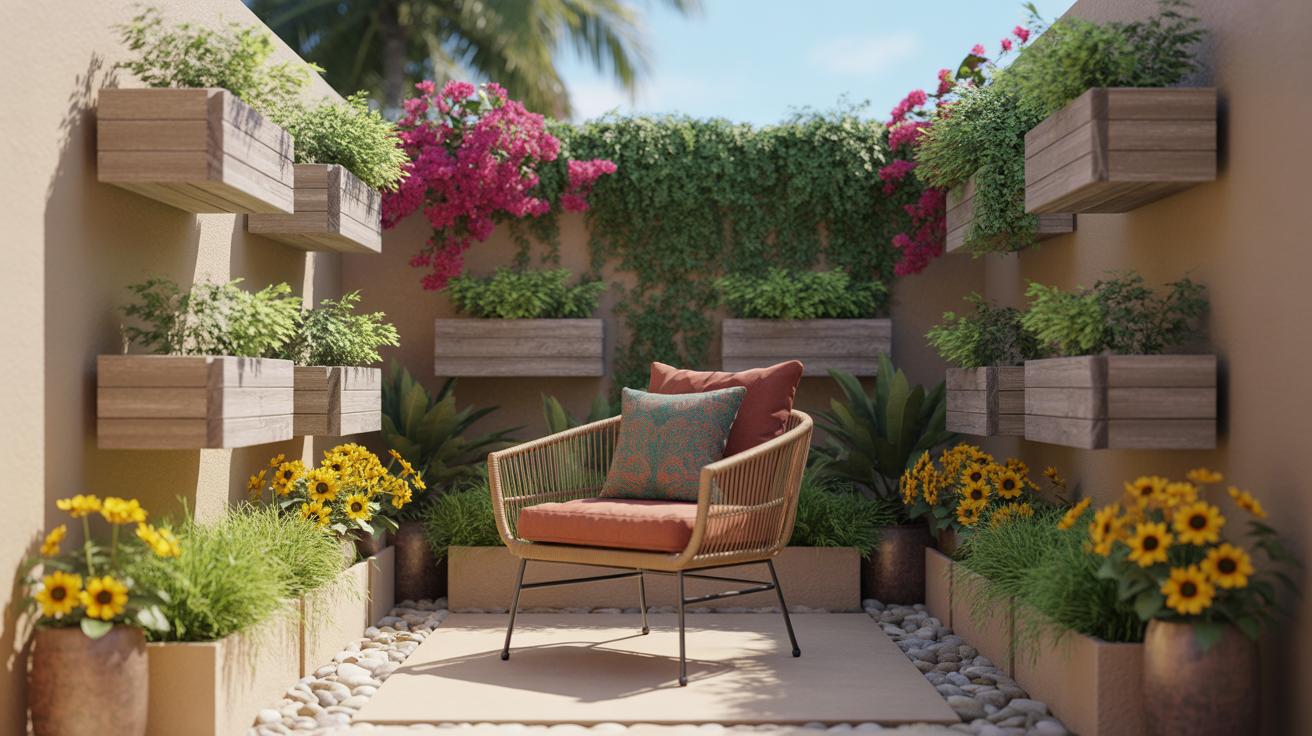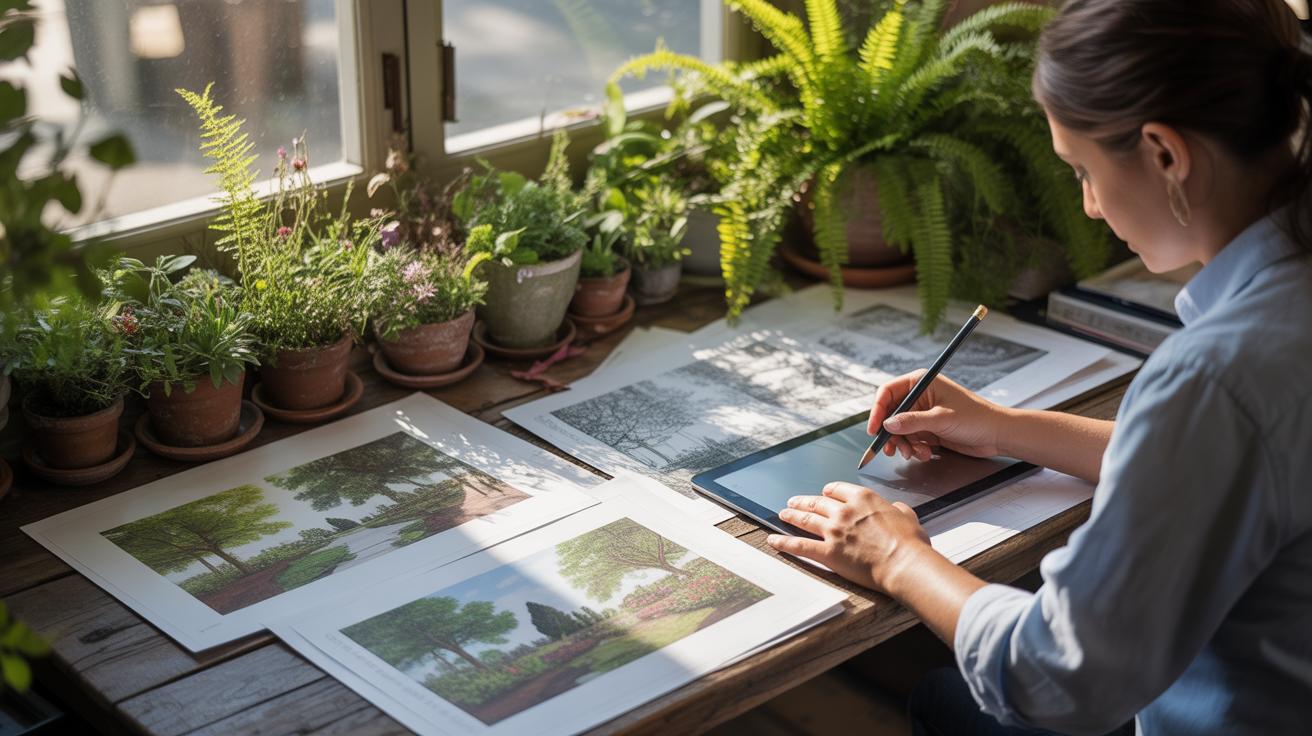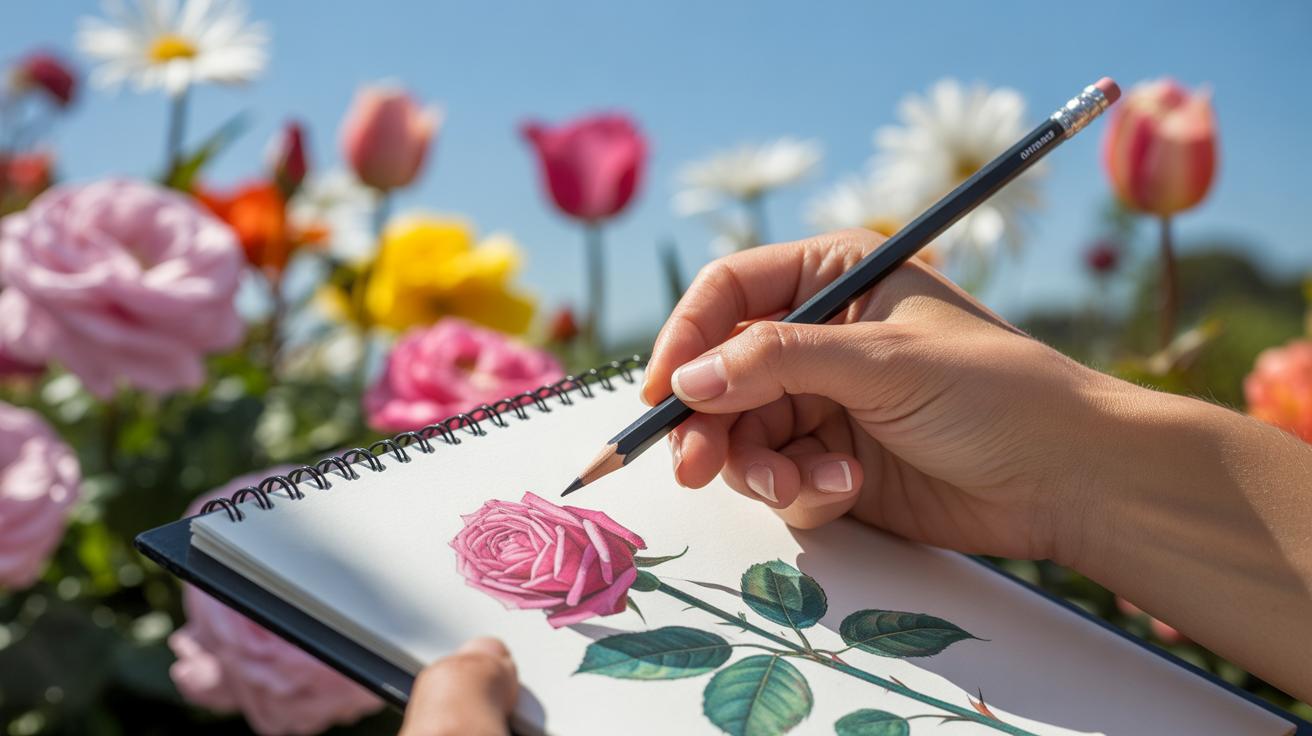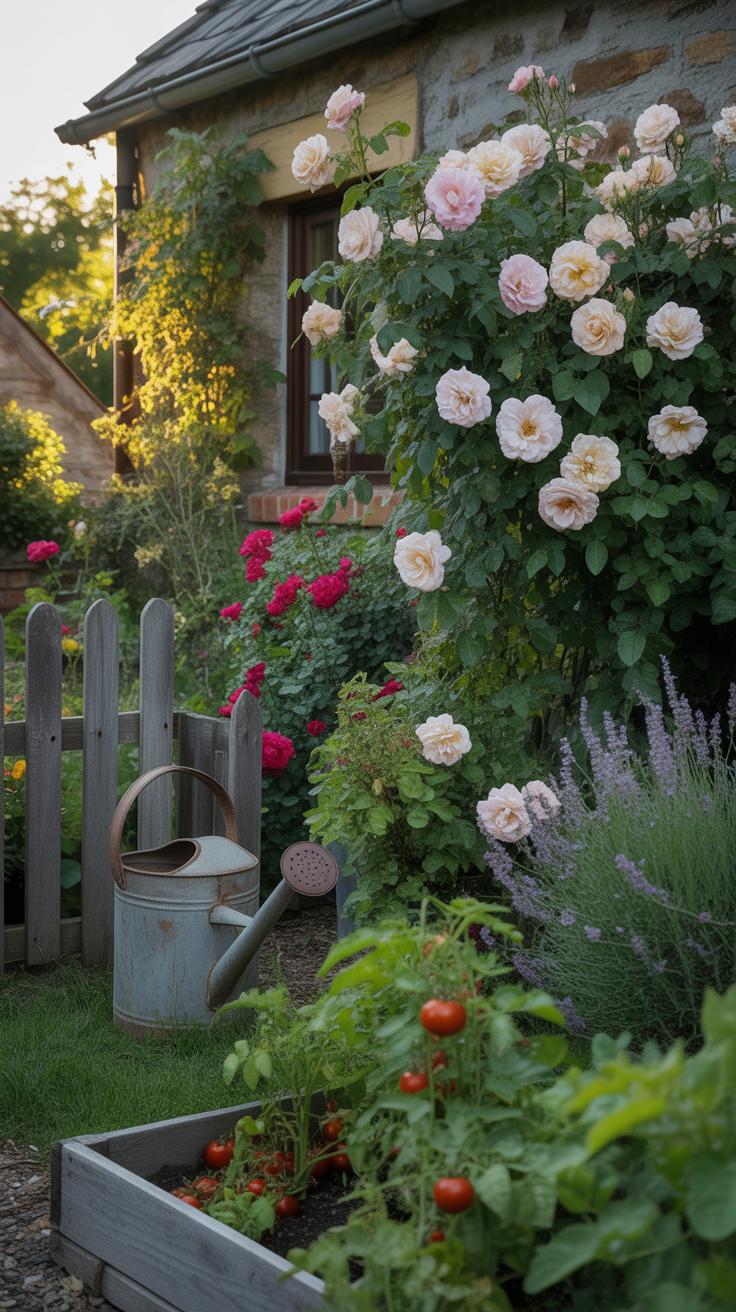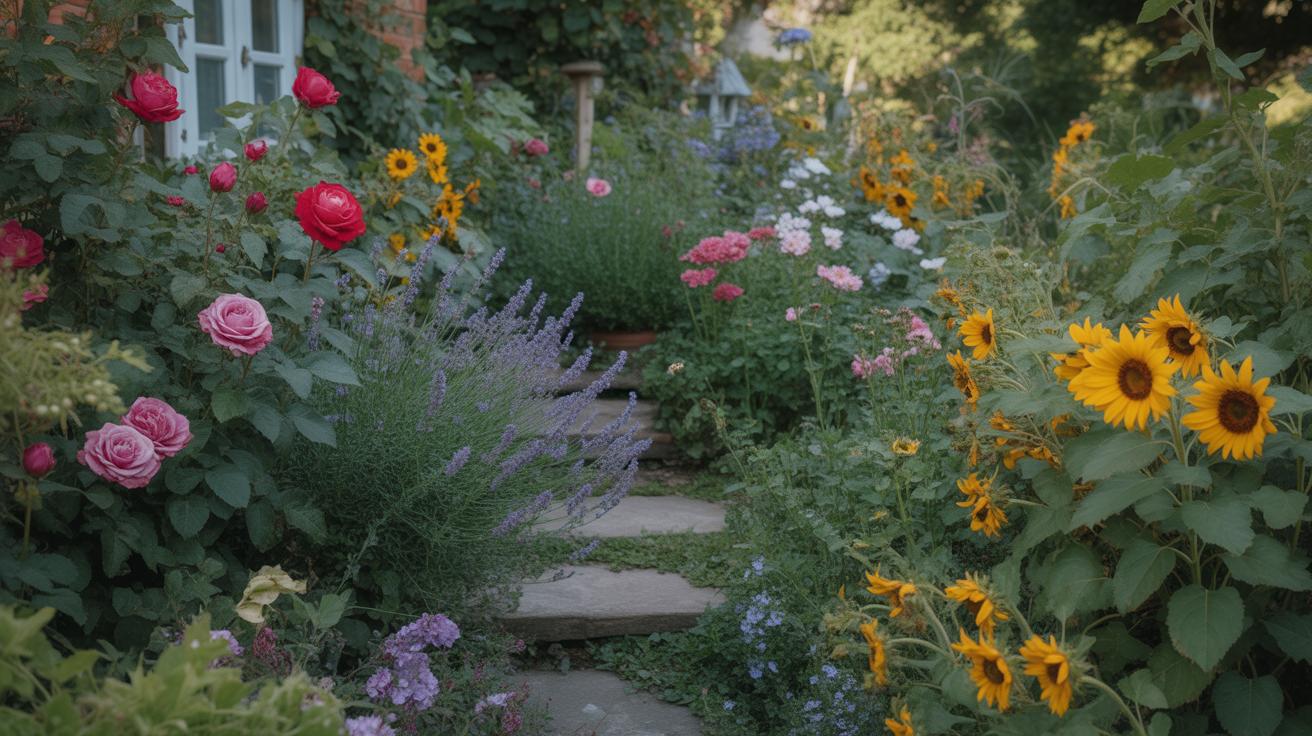
Common Cottage Garden Design Mistakes That Ruin Your Layout
Introduction
Cottage garden design is a charming style that mixes flowers, herbs, and vegetables in a cozy and informal way. This approach creates a garden full of life and color, but common design mistakes can spoil the look and function of your space. Many gardeners don’t realize how simple layout errors or wrong plant choices can weaken their garden’s charm.
This article focuses on common cottage garden design mistakes that ruin your layout. We will explain why these errors matter and how you can avoid them. By making a few smart changes, you can keep your garden looking healthy and inviting all year.
What Defines Cottage Garden Design
Cottage garden design is often seen as a relaxed, almost casual approach to gardening. It isn’t about rigid lines or overly polished beds. Instead, it feels like a natural mix where flowers, herbs, and even vegetables grow side by side, sometimes spilling over pathways or fences without strict boundaries. You might notice that same space filled with colors, scents, and textures, blending in a way that seems unplanned yet somehow harmonious.
This style isn’t new; its roots trace back centuries when people relied on their gardens not just for beauty but for food and medicine. Back then, the garden was a vital part of daily life, a practical space that also offered diversity and charm. That practical history still shapes cottage gardens today, giving you a chance to combine usefulness and aesthetics freely.
Origins And Basic Features
The origins of cottage gardens come from small rural homes, where people had limited space but plenty of needs. It wasn’t about making a showpiece but rather about making every inch count. Dense planting helped keep weeds down and used space wisely. Mixed plantings meant a few flowers could brighten the area, herbs added cooking flavor, and vegetables provided nourishment.
Key features include:
- Dense, layered planting that looks full yet informal.
- Paths that aren’t too straight, adding to a gentle, wandering feel.
- A blend of plants that seem like they just grew together instead of being carefully separated.
- Structures like low fences, trellises, or even old containers that feel homey rather than showy.
It’s not a style for perfectionists. The charm partly comes from things growing a little wild or unexpected, which is why it can be tricky to keep a good balance.
Traditional Versus Modern Styles
Traditional cottage gardens stick close to their roots: mostly old-fashioned flowers such as hollyhocks, sweet peas, and roses, combined naturally with kitchen herbs and vegetables. The layouts tend to be compact and dense, focusing on usefulness as much as look.
Modern cottage gardens, though, sometimes introduce different plants and materials. You might see native wildflowers mixed in or even perennials chosen for lower maintenance. Designs can be more flexible too, with clearer zones or raised beds, making them easier to manage or fit into smaller urban yards.
Still, whether you prefer classic or modern, the sense of informality and richness in plant variety remains. Yet, does mixing new trends sometimes dilute the original spirit? Or does it make the design more accessible? It’s up to you to decide where your garden falls on that spectrum.
Common Layout Mistakes To Avoid
Overcrowding And Plant Competition
One of the most frequent mistakes in cottage garden design is overcrowding plants. It might seem charming to cram as many flowers and shrubs as possible into a space, but this quickly backfires. When plants grow too close, they compete for sunlight, water, and nutrients. You might notice weaker plants struggling to survive, or worse, the whole bed looking messy and unhealthy.
Take, for example, a mix of tall foxgloves and low-growing sweet peas planted side by side without enough room. The foxgloves can cast heavy shadows that stunt the peas’ growth, leading to sparse blooms. Overcrowding disrupts air circulation too, which often encourages fungal diseases. Your garden might look full, but it will lack vitality.
You want a lush, flowing garden, not a jumbled patch of fighters vying for survival.
Ignoring Pathways And Visual Flow
Paths do more than offer a way to get from A to B. They shape how your garden feels and functions. Without clear pathways and sight lines, a garden—especially a cottage one—can feel claustrophobic or disorganized. It’s easy to forget this when you’re caught up in planting and forget to ‘leave space’ for movement.
When paths are too narrow or poorly placed, they can interrupt the experience, make plants hard to reach, or create awkward corners. I once saw a garden where a winding path vanished behind clumps of tall flowers, forcing visitors to almost stumble through the bushes. Not very enjoyable.
Visual flow guides the eye and invites visitors deeper into the space. Overlooking this results in a cluttered look without clear focal points. Think how you move through your garden. Do you want to squeeze past a tangle of plants, or stroll along a gentle, inviting path?
How Plant Selection Impacts Your Garden
Choosing plants for a cottage garden isn’t just about picking what looks nice. Size matters—some plants will quickly outgrow their space, shading out others or crowding paths. It’s frustrating when a tiny seedling becomes a sprawling bush in a season, isn’t it? You also need to think about water and light. A thirsty plant in a dry spot will struggle, no matter how charming it seems in the nursery. Likewise, a sun-loving flower won’t thrive in deep shade.
Matching plants to your garden’s conditions means knowing your site well. What kind of soil do you have? Is it heavy clay or sandy? Do some areas stay damp, while others dry out fast? These details shape which plants will flourish without constant fuss. Many gardeners overlook this and end up disappointed when plants wither despite their care.
Another layer comes with balancing what you want to see with what you want to eat. Combining ornamentals with edibles can work surprisingly well, but it’s tricky. For example, planting thyme near roses can help deter pests, and lettuces can fill in gaps between taller flowers. Yet, sometimes the vegetable patch dominates, turning the garden into more of a food plot than a relaxing space. Finding that sweet spot—where herbs and blooms coexist without competing too much—takes some experimenting.
Plan Your Garden Setup StepByStep
Before you dig in, take some time to really know your garden space. Start by measuring the entire area carefully—don’t just guess. Use a tape measure to note lengths and widths, jot down any paths, fences, or existing features. It might seem tedious, but having exact numbers helps avoid awkward surprises later on. Sketch what you measured on a piece of paper; your drawing doesn’t have to be perfect, but it should roughly show the shape and size of your garden.
Once you have a basic map, think about how you want to organize plants. Grouping by height works well—you’ll want taller plants at the back or center if your garden is circular, shorter ones towards the front. But also consider each plant’s watering and sunlight needs. Placing moisture-loving plants together and sun-lovers in the brightest spots saves you headaches.
Try clustering plants in small groups rather than scattering them randomly. Clusters feel more natural and make maintenance easier. It’s a bit like arranging furniture—you want balance but not symmetry. Step back and ask yourself: Does this placement make sense? Will each plant get what it needs? This rough plan becomes your guide as you start planting, helping prevent overcrowding or lonely spots.
Some gardeners swear by layering plants in three tiers: tall, mid-height, and ground covers. Others mix sizes more fluidly. Either way, think about how plants grow over time. Will a tall perennial overshadow smaller neighbors? Will ground covers spread too quickly? Jot these notes on your sketch if you can.
Planning a cottage garden can be messy and a little frustrating, sure. But having a drawn plan and thoughtful groupings turns guesswork into a manageable process. You’ll thank yourself later when things grow right where they should.
Choosing Tools For Effective Gardening
When you’re working on a cottage garden, having the right tools feels almost like half the job is done, or at least, less frustrating. You don’t need fancy machinery or expensive gadgets. Often, simple, reliable tools are what count most.
Basic Gardening Tools You Need
Think about a spade first. It’s good for digging, turning soil, and edging beds. Try to find one that feels comfortable in your hand—if it’s awkward, you might avoid using it as much, which is a shame. Then, there are pruning shears. They keep your plants in shape and promote healthy growth. Dull shears make pruning a chore. And who likes a struggle when all you want to do is tidy a rose bush?
Watering cans also deserve a mention. Yes, you might have a hose, but a watering can gives you control for delicate plants. Plus, it’s easier to spot overwatering when you’re pouring by hand. Maybe you’ll find yourself enjoying this slower, more precise method more than expected.
Materials To Enhance Structure And Pathways
To give your garden clear boundaries and walkways, materials like mulch, edging, and stones come in handy. Mulch doesn’t just look tidy—it keeps weeds down and holds moisture. I’ve learned that using leaf mold as mulch blends perfectly with a cottage garden’s informal vibe.
Edging defines beds and paths, preventing plants from spreading too wildly. You can choose simple wire edging, but natural stone edges work beautifully if you want something that looks less manufactured. Stones for pathways do more than make walking easier—they add texture and subtle structure to the garden.
One thing I’ve noticed is that choosing the right materials for your paths can influence how you experience the garden daily. Sometimes, it’s just about finding that balance between sturdy and natural. Are you aiming for something that feels perfectly neat or a bit more relaxed? Your choice affects the whole mood.
Spotting And Fixing Common Plant Problems
Plants in cottage gardens often face a few predictable troubles, and catching these early can save you a lot of frustration. Leaves yellowing or wilting might suggest nutrient deficiencies or watering mistakes. Sometimes, brown spots emerge without any clear cause — usually a sign of fungal infections or pests nibbling away unseen.
Look out for curled leaves, stunted growth, or odd discolorations. These symptoms could mean aphids, slugs, or mites have taken up residence. Don’t ignore small patches of damage; pests multiply fast. Try gently rinsing leaves or handpicking pests first — organic control often means simpler fixes and less stress on your plants. If you spot powdery mildew or rust, a homemade spray of diluted milk or baking soda can control fungi without harsh chemicals.
When plants struggle, it pays to check the soil underneath. Is it soggy or bone dry? Adjust your watering habits accordingly. Often, a daily squirt isn’t enough or, paradoxically, too much water leads to root rot. Remember, soil that drains poorly traps moisture and invites disease. Amending with organic matter like compost improves texture and health, giving plants a stronger foundation to recover.
Fixing these problems means patience and observation. You might catch an aphid attack just in time, or realize your hydrangeas are thirsty at dawn rather than dusk. The key is listening to the subtle signs your garden offers, even if they seem contradictory sometimes. What works for one plot may need tweaking for another. Have you noticed how some plants thrive despite minor neglect while others seem fragile despite your best efforts? That unpredictability is what keeps gardening a curious journey.
Comparing Dense Versus Open Designs
Benefits Of Dense Planting
Dense planting in a cottage garden can really pack a punch. It squeezes the most out of limited space, letting you fit more plants into a smaller area. You might not have thought about this, but tighter groupings help to block sunlight from reaching bare soil, so weeds tend to struggle. That’s a subtle but useful advantage if you want to spend less time pulling unwanted plants.
Plus, a dense layout often feels lush and full, creating that cozy, almost wild charm many look for in a cottage garden. When I tried a thick cluster of herbs and flowers along my path, the effect was dramatic—rich colors and textures melded together, and it felt like a natural haven. But, be mindful that such tight planting might sometimes hide weaker plants, making them more vulnerable without regular attention.
When Open Spaces Work Better
On the flip side, sometimes giving your plants room to breathe works better. Open spaces in your garden allow better airflow, which can reduce fungal diseases and keep leaves drier. I remember leaving a wider gap between my flowering shrubs one spring and noticing fewer mildew spots the following year.
Accessibility is another plus with open designs—you can move around easier for maintenance or just enjoy the garden’s details without constantly squeezing past stems. Also, if certain plants require more sun or have sprawling habits, an open layout prevents overcrowding that can stunt growth.
Still, too much open space might make the garden look sparse or unfinished. You might wonder whether the trade-off is worth it, depending on your priorities. Sometimes, mixing both dense clusters and clearings gives you the best balance—though it’s tricky to get that just right.
How To Maintain Your Cottage Garden Year Round
Keeping a cottage garden flourishing through the seasons needs more than just planting and hoping for the best. You’ll want a rhythm—a seasonal routine to support plant health, make pruning manageable, and respond to weather changes. It’s tempting to think of your garden as self-sustaining, but that’s rarely the case.
Start with spring. This is the time to check for winter damage. Deadheading spent blooms and cutting back winter-killed stems encourages fresh growth. Feed your plants with a balanced fertilizer—not too much, or they’ll grow leggy rather than full. Watering should be steady but not excessive; young shoots need moisture without drowning.
Moving into summer, focus on regular deadheading to prolong flowering and watch for pests. Pruning now is selective—removing only what’s necessary to keep plants tidy. Water deeply during dry spells, especially early in the day to reduce evaporation.
Autumn calls for more substantial pruning, but not heavy cutting that could stress plants before winter. Clearing fallen leaves from beds helps prevent fungal diseases. It’s also a good moment to mulch; this shields soil and roots against temperature swings.
Preparing your garden for winter involves several vital steps. Trim back perennials to about 6 to 8 inches, but leave some seed heads for birds—unless you prefer tidier beds. Mulch again with straw, bark, or compost to keep the soil insulated. Moving vulnerable pots indoors or grouping them in sheltered spots can reduce frost damage. Check soil moisture before cold weather; dry soil worsens freeze problems, yet too much moisture invites rot.
Does your garden feel like it needs more attention in any particular season? Maybe you find pruning overwhelming or watering inconsistent. Experiment with a calendar or journal—tracking what you do and what your plants respond to might clarify things over time. You might realize adjustments are needed, perhaps less watering in autumn or more pruning during early spring.
Examples Of Successful Cottage Garden Layouts
Case Study Of A Small Urban Garden
In a cramped city backyard, making a cottage garden work feels tricky but not impossible. Imagine a plot about 10 by 15 feet surrounded by fences and buildings. Instead of sprawling beds, this garden uses tiered containers and raised wooden boxes, creating layers rather than flatness. Softly curved gravel paths thread gently through the plot, encouraging movement without demanding much space.
Plant-wise, it relies on hardy classics like sweet peas climbing trellises, lavender spilling over raised boxes, and small roses that don’t take too much room. I think the surprise here is how mixing height with texture creates a sense of depth—you don’t realize how full it feels until you stand in it.
Seating is minimal: a simple wrought-iron bench tucked under a climbing clematis. It’s cozy, sure, but also inviting on a small scale. The layout proves you don’t need acres to get charm or that tangled, yet intentional, look cottage gardens aim for.
Example Of A Large Country Cottage Garden
Out in the countryside, space is less of a concern and the garden breathes more freely. A large cottage garden here often stretches over an eighth of an acre or more, with broad, meandering paths that seem to wander without purpose—but really guide you.
Traditional plants dominate: hollyhocks tower near the house, foxgloves provide vertical drama, and sprawling herbaceous borders run wild with daisies, lupines, and roses. This kind of scale allows for several distinct “rooms,” each with comfortable seating nooks—a weathered wooden bench, a stone table with chairs, sometimes even a small pergola wrapped in honeysuckle.
What works well is the balance between deliberate planting and a bit of natural chaos. The seating spots feel right at home, nestled amongst the blooms, inviting long afternoons spent just watching life happen. This bigger setup highlights how space lets you layer elements without the garden becoming cluttered.
Conclusions
To keep your cottage garden looking its best, watch out for layout errors and overcrowding. Make sure to space plants properly and choose species that get along well. These small changes help your garden grow strong and look balanced.
Remember, a successful cottage garden blends beauty and utility. Pay attention to your design choices, fix common mistakes early, and enjoy a garden that feels welcoming and full of life every season.




